Harvesting Edible Cactus Pads – How To Pick Cactus Pads To Eat
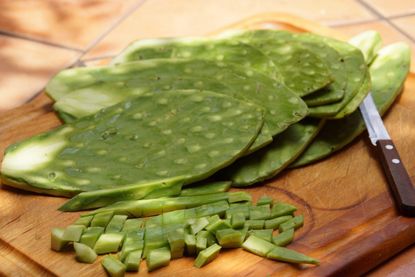

The genus Opuntia is one of the larger groups of cacti. Often called beaver-tailed cactus due to their large pads, Opuntia produces several types of edibles. The beautiful juicy fruits are delicious and are useful in jams and jellies. Can you eat cactus pads though? The broad, succulent pads can be eaten raw or cooked in a variety of ways. You just need to know how to pick cactus pads and how to prepare them. Don't let those spines scare you. Cactus pads are delicious and nutritious.
Can You Eat Cactus Pads?
If you have ever been to an ethnic store specializing in Mexican and southwestern cuisine, you may have seen cactus pads. The plants grow especially well in desert type areas and adult plants can produce 20 to 40 pads per year. The locality where the plants grow wild call the pads nopales, a desert delicacy that has been transported across the states. There is a specific time of the day and year for harvesting edible cactus pads. Harvesting nopales at the optimum time ensures less acid content and a sweeter vegetable. Prickly pear cactus is the primary source of nopales. In spite of the pad's armament, they have been used for food probably as long as humans have been in their native region. Nopales are eaten either raw or cooked. Once cooked, they have a slightly slimy texture much like okra, but the flavor is appealing and adds a lemony note to recipes. You can often see nopales canned in specialty stores or the Mexican section of the supermarket. You use these like you would any canned vegetable. The cacti are raised commercially in Mexico, but you can also harvest your own pads if you live in an area where Opuntia are common. Harvesting edible cactus pads is a bit like raiding a honeybee nest. The opportunity to get stung does exist.
When to Harvest Edible Cactus
You can harvest the pads at any time of the year. However, knowing when to harvest edible cactus for best flavor will ensure sweeter vegetables. The best time is midmorning when the acid content is still low. Since the pad already has a tart flavor, you want to avoid any bitterness that might occur if you harvest later in the day. Mature cactus can be harvested up to six times per year. Just remember, as with any plant, ensure that at least 2/3 of the pads remain on the plant to fuel photosynthesis and energy gathering.
How to Pick Cactus Pads
The first step when harvesting nopales is to arm yourself. Dress in long sleeves and thick gloves. Tongs are helpful, as is a sharp knife. Grasp the pad with the tongs and cut it where the section joins to another pad. Remove the pad using the tongs and place it into a bag. A burlap or fabric bag works best, as a plastic bag is no match for the spines. Once you get the pad home, wash it using the tongs again, use the knife to scrape off the spines. You can then peel off the skin if you wish and use the vegetable raw in salads or sautéed, boiled, and roasted. You may also choose to use the pads medicinally, much like an aloe plant. The sap in the pad apparently also repels mosquitoes. This amazing cactus has numerous uses, is easy to grow, and is a symbol of the American Southwest.
Gardening tips, videos, info and more delivered right to your inbox!
Sign up for the Gardening Know How newsletter today and receive a free download of our most popular eBook "How to Grow Delicious Tomatoes."

Bonnie Grant is a professional landscaper with a Certification in Urban Gardening. She has been gardening and writing for 15 years. A former professional chef, she has a passion for edible landscaping.
-
 Urban Composting Guide: How To Compost In The Middle Of The City
Urban Composting Guide: How To Compost In The Middle Of The CityUrban composting does not have to be daunting. You can compost in the city, and maybe even try some urban worm composting!
By Mary Ellen Ellis
-
 Shrub Diseases And Pests To Watch Out For
Shrub Diseases And Pests To Watch Out ForShrub diseases and pests can be challenging. Learn how to recognize and eradicate them before they can present a danger to your plants.
By Susan Albert
-
 Growing Cold Hardy Eastern Prickly Pear Cactus
Growing Cold Hardy Eastern Prickly Pear CactusFor info on growing cold hardy eastern prickly pear cactus, look no further, just click here!
By Becca Badgett
-
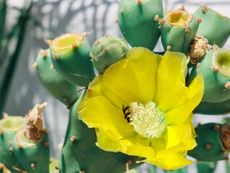 Spineless Prickly Pear Info – Tips For Growing Ellisiana Prickly Pears
Spineless Prickly Pear Info – Tips For Growing Ellisiana Prickly PearsIf you are among the many gardeners who like cactus but don’t like spines, it may be time to consider installing ellisiana cactus in your backyard, better known as spineless prickly pear. Click here for information on growing ellisiana prickly pear.
By Teo Spengler
-
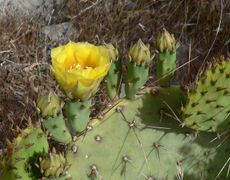 Engelmann Prickly Pear Info – Learn About Growing Cactus Apple Plants
Engelmann Prickly Pear Info – Learn About Growing Cactus Apple PlantsEngelmann prickly pear, also commonly called cactus apple plants, is a wide-ranging species of prickly pear. This is a pretty plant for desert gardens, and it will grow at a moderate rate to fill in large spaces. Learn more about it in this article.
By Mary Ellen Ellis
-
 Cow’s Tongue Plant Care: How To Grow A Prickly Pear Cow’s Tongue
Cow’s Tongue Plant Care: How To Grow A Prickly Pear Cow’s TongueFolks that live in hot climates often utilize plants that are drought tolerant. A great example is a cow’s tongue prickly pear. Besides having a fabulous tongue in cheek name, it is very tolerant of heat and dry conditions, plus it makes a great barrier. Learn more here.
By Amy Grant
-
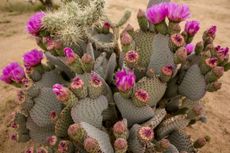 Beavertail Cactus Care – How To Grow A Beavertail Prickly Pear Cactus
Beavertail Cactus Care – How To Grow A Beavertail Prickly Pear CactusBeavertail prickly pear cactus is a clumping, spreading cactus with flat, grayish-green, paddle-like leaves. It glows with brilliant, rose-purple blooms in spring and early summer. Have we piqued your curiosity? Click here for more beavertail prickly pear information.
By Mary H. Dyer
-
 Tulip Prickly Pear Info: Guide To Growing Brown Spined Prickly Pears
Tulip Prickly Pear Info: Guide To Growing Brown Spined Prickly PearsWhat is a tulip prickly pear? This cactus is also known as brown spined prickly pear for its rust to reddish brown spines. If you live in warm, arid regions, learn how to grow brown spined prickly pear and add its unique flowers to your garden. This article will help.
By Bonnie L. Grant
-
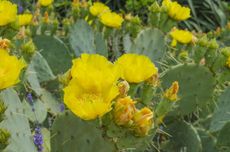 Opuntia Barbary Fig Info: How To Grow A Barbary Fig Plant
Opuntia Barbary Fig Info: How To Grow A Barbary Fig PlantOpuntia ficus-indica is more commonly known as a Barbary fig, a variety of prickly pear cactus. This desert plant has been used for centuries as food, fending, and even dye. Growing Barbary fig plants is both rewarding and useful. Learn more in this article.
By Mary Ellen Ellis
-
 Opuntia Cactus Varieties: What Are Different Types Of Opuntia Cactus
Opuntia Cactus Varieties: What Are Different Types Of Opuntia CactusOpuntia is the largest genus in the cactus family. You will recognize most by their classic "prickly pear" appearance. Growing Opuntia in gardens adds desert appeal and unique flora to the landscape. Learn more about the plants in this article.
By Bonnie L. Grant